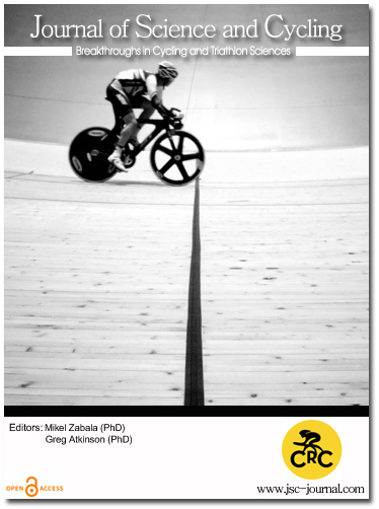Experimental evaluation of the repeatability of wind tunnel measurement of cyclist's drag
Keywords:
cycling, aerodynalmics, wind tunnel, metrologyAbstract
Context: Reducing drag is a major challenge in cycling because, on flat road conditions, aerodynamic drag represents more than 80% of the total resistive forces applied to the cyclist. In order to reduce the aerodynamic resistive forces, they must be precisely quantified. In the literature, different methods have been proposed [1]; we can mainly quote: wind tunnel [2], dynamometric measurement [3], deceleration [4], linear regression [5], and 3D digitalization-based method [6-7]. However wind tunnel measurement techniques are considered a gold standard due to their repeatability and accuracy.
Nevertheless a major problem with wind tunnel measurements is the repeatability of rider position [8]. The ability of the cyclist to maintain their position throughout the testing period is indeed limited. Moreover some testing scenarios require the rider to get off the bicycle and re-mount the bicycle in the same position. This causes small variations in rider position which result in a change in the physical geometry of the rider and therefore in its aerodynamic properties. As a consequence the overall repeatability of wind tunnel drag measurements (i.e. of a “real” cyclist's drag) is worse than pure repeatability of the method (i.e. measuring a mannequin’s drag for instance). If this phenomenon is known, to the best of our knowledge, no study of the global repeatability of wind tunnel cyclist’s drag measurements has been carried out. This parameter is however of outmost interest for the design of studies capable of properly isolating the variables which influence the aerodynamic forces.
In this work we evaluate the global repeatability of wind tunnel drag measurements for different conditions: with/without pedaling movements, while staying still on the bike or getting on after getting off, and for two wind speeds.
Downloads
Published
How to Cite
Issue
Section
Copyright (c) 2021 Journal of Science and Cycling

This work is licensed under a Creative Commons Attribution-NonCommercial-NoDerivatives 4.0 International License.
Authors contributing to Journal of Science and Cycling agree to publish their articles under a Creative Commons CC BY-NC-ND license, allowing third parties to copy and redistribute the material in any medium or format, and to remix, transform, and build upon the material, for any purpose, even commercially, under the condition that appropriate credit is given, that a link to the license is provided, and that you indicate if changes were made. You may do so in any reasonable manner, but not in any way that suggests the licensor endorses you or your use.
Authors retain copyright of their work, with first publication rights granted to Cycling Research Center.






